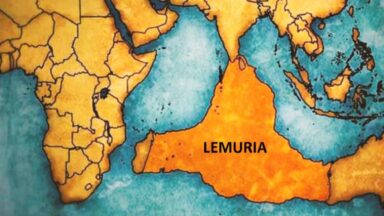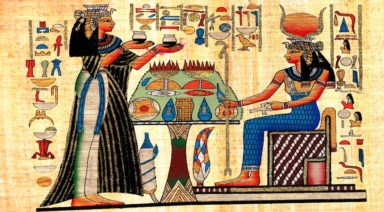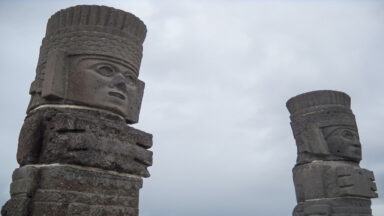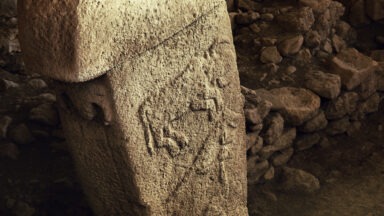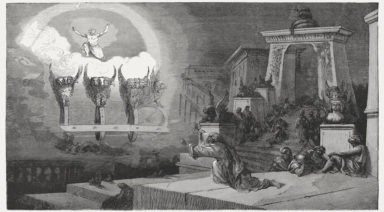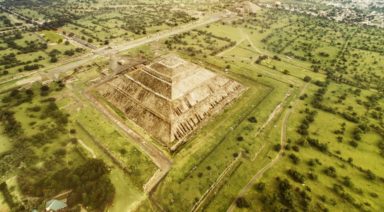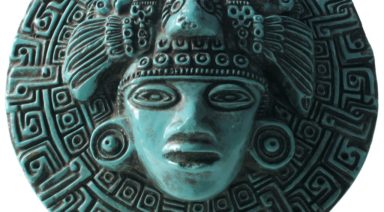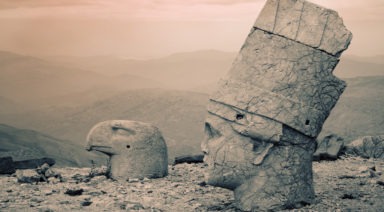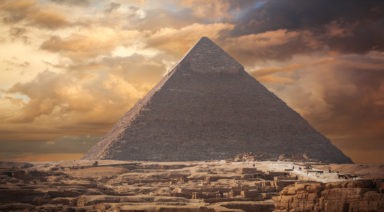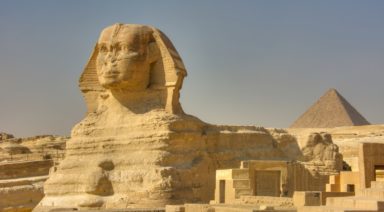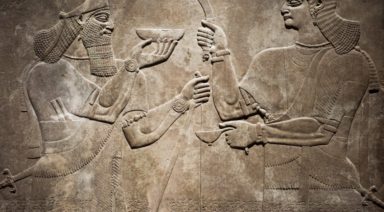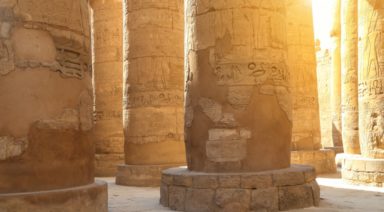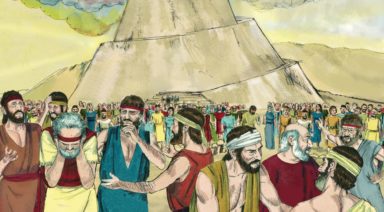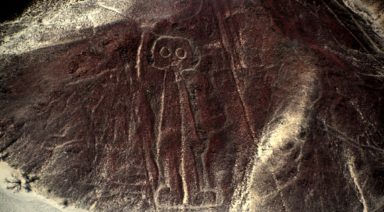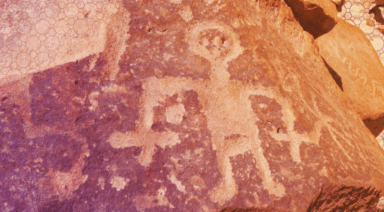The History of the Anunnaki, Creators of Humanity?
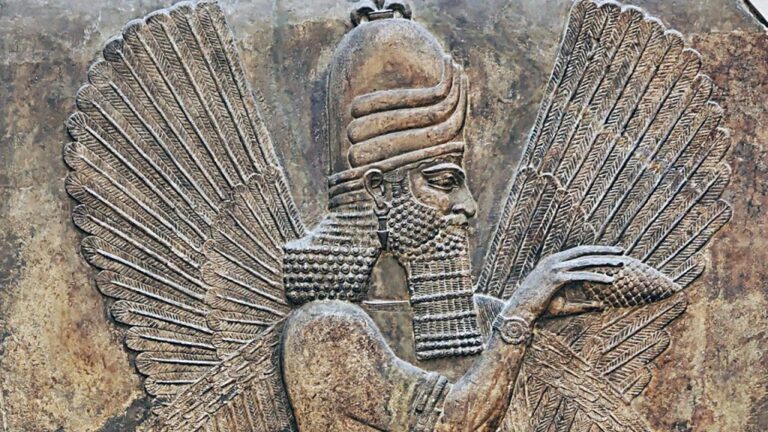
The Anunnaki are mentioned in ancient Sumerian texts as powerful deities who descended from the sky to influence human civilization. These beings not only guided the Sumerians in the development of their culture, but also participated in the creation and evolution of mankind. In this article we explore who the Anunnaki were, their characteristics, and how their presence has been interpreted in different historical and cultural contexts.
Table of Contents
- Who Are the Anunnaki?
- Characteristics of the Anunnaki According to Ancient Texts
- Origin and Meaning of the Term Anunnaki
- The Anunnaki and the Creation of the Human Being
- The Anunnaki in the Bible and Other Sacred Texts
- The Connection Between the Anunnaki and Atlantis
- Are the Anunnaki Still on Earth Today?
Who Are the Anunnaki?
The Anunnaki are a race of deities mentioned in Sumerian mythology, considered to be the sons of Anu, the sky god. These deities were revered for their power and wisdom, and were believed to rule the Earth and the underworld. The Sumerians recorded on their cuneiform tablets the existence of the Anunnaki and their intervention in human affairs, attributing to them the creation of civilization through the transmission of advanced knowledge in astronomy, agriculture, architecture and medicine.
The writer and researcher Zecharia Sitchin popularized the idea that the Anunnaki were extraterrestrial beings from the planet Nibiru. According to Sitchin, these gods arrived on Earth some 450,000 years ago and, through genetic engineering, created Homo sapiens by mixing their DNA with that of terrestrial primates. The main purpose of this intervention was to use humans as labor to extract gold and other natural resources.
In the series Ancient Civilizations, available on Gaia, these theories are explored through various archaeological evidence and ancient texts, offering fascinating insights into the influence of the Anunnaki on human history.

Characteristics of the Anunnaki According to Ancient Texts
Sumerian texts and other ancient traditions attribute to the Anunnaki a number of extraordinary characteristics that distinguish them from other mythological or historical beings. These descriptions allow us to better understand why they were considered figures of superior power and wisdom.
- Celestial origin: They were said to have descended from the sky, specifically from the planet Nibiru, whose elliptical orbit periodically connected them with the Earth.
- Advanced technology: They possessed superior technical knowledge in fields such as astronomy, medicine, engineering and architecture.
- Imposing appearance: They were described as tall beings, with defined features, long hair and beard, conveying authority and divinity.
- Extreme longevity: It was believed that they could live for thousands of years, which is reflected in the long reigns recorded in the Sumerian King List.
- Genetic capabilities: According to Sitchin, they mastered DNA manipulation and created human hybrids for specific tasks, such as mining.
- Role of rulers: They ruled cities and regions, establishing laws and rules that structured Sumerian social and political life.
- Lasting cultural influence: His teachings left deep traces in Mesopotamian culture, in religious practices, symbols and architectural structures.
Origin and Meaning of the Term “Anunnaki”
The term “Anunnaki” comes from Akkadian and translates as “those who descended from heaven”. In turn, it derives from the Sumerian Anunna, which means “the sons of Anu”, the supreme god of the sky in Mesopotamian cosmology. This name reflects the divine and celestial character of these beings, who were seen as intermediaries between the world of the gods and that of humans.
In Sumerian cuneiform tablets, the Anunnaki appear as figures with authority to establish order on Earth and in the underworld. Their constant presence in mythical accounts suggests that they were not simply local deities, but entities with a fundamental role in the creation, destiny and governance of the human and spiritual world.
The Anunnaki and the Creation of the Human Being
One of the most debated aspects of the Anunnaki is their participation in the creation of human beings. According to the theories proposed by Zecharia Sitchin, the Anunnaki would have arrived on Earth some 450,000 years ago with the objective of extracting gold to restore the atmosphere of their planet, Nibiru. To facilitate this task, they found it necessary to create a workforce adapted to the conditions of the planet.
According to this view, the Anunnaki used their knowledge of genetics to manipulate the DNA of primitive hominids and combine it with their own. The result would have been a new species: Homo sapiens. This hybrid being was not only capable of following orders and performing physical tasks, but also inherited some of the intelligence and technical skills of its creators.
In addition to creating a new life form, the Anunnaki would have guided its cultural development. They did not limit themselves to giving biological origin to human beings, but also sowed the first notions of social organization, spirituality and technology. This would explain, for some researchers, the rapid evolutionary and civilizational leap observed in the archaeological records of Mesopotamia.
-
Genetic Manipulation and Origin of Homo Sapiens
Genetic manipulation appears to be central to the theory of human creation by the Anunnaki. Sitchin posits that these beings had the ability to alter the genetic code with precision, a knowledge far beyond what ancient civilizations could have developed on their own. This act of biological engineering would have given rise to a species capable of reasoning, communicating and collaborating in complex activities.
This new being, the product of a fusion between extraterrestrial and terrestrial DNA, was designed with a functional purpose: to serve the Anunnaki in mining and other tasks. However, over time, this hybrid would have acquired self-awareness and developed capabilities beyond the control of its creators. This would have led to internal tensions among the Anunnaki themselves regarding the future of humanity.
-
Knowledge Transmitted to Ancient Civilizations
In addition to their biological intervention, Sumerian accounts indicate that the Anunnaki shared a wealth of knowledge with humans. This knowledge included astronomy, mathematics, architecture and agricultural practices that fueled the rise of the Mesopotamian civilization. Sumerian temples, ziggurats and irrigation systems are seen as evidence of this advanced legacy.
This transmission of knowledge was not random. The Anunnaki would have chosen specific human lineages to continue their teaching, giving rise to priestly castes and kings who ruled with “divine” authority. Through these intermediaries, the teachings of the Anunnaki were integrated into the social and spiritual structure of early human cultures, many of which continued to worship them as gods for centuries.
The Anunnaki in the Bible and Other Sacred Texts
Some researchers claim that the Anunnaki appear in the Bible under the name of the Nephilim. Genesis 6:4 describes these beings as the “sons of God” who united with the “daughters of men,” giving rise to a race of giants. This narrative bears similarities to Sumerian stories, where celestial gods interact and interbreed with humans, generating special lineages.
Other religious traditions also contain references to superior beings descending from heaven to guide or intervene in human affairs. Apocryphal texts such as the Book of Enoch expand on these descriptions, mentioning the “Watchers,” entities that taught mankind advanced knowledge. These coincidences have led some authors to propose that sacred figures in different cultures may have a common origin in the stories of the Anunnaki.
The Connection Between the Anunnaki and Atlantis
The alleged relationship between the Anunnaki and Atlantis stems from the idea that both represent highly advanced civilizations that existed in antiquity. Some theorists claim that the Anunnaki could have been the true founders of Atlantis, transmitting their technology and knowledge to the first Atlanteans. This hypothesis would explain the level of sophistication attributed to this mythical civilization.
When Atlantis was destroyed, according to Plato’s accounts, some survivors would have taken this knowledge with them to other parts of the world. This would have given rise to new cultures such as the Egyptian, Mesopotamian and Andean civilizations. From this perspective, the legacy of the Anunnaki did not end with Atlantis, but was dispersed throughout the planet through these migrations.
Are the Anunnaki Still on Earth Today?
The possibility that the Anunnaki are still present on Earth is an idea that has gained momentum among certain groups of researchers and enthusiasts. According to this theory, these beings never completely left the planet, but continued to operate from hidden planes or through human elites with whom they would be linked. Some even suggest that they influence global politics, economics and technological development.
However, there is no evidence to support these claims. Most scholars consider these ideas to be speculative. Even so, interest in the figure of the Anunnaki continues to grow, fueled by ancient texts, archaeological finds and the increasing exploration of alternative narratives about the origin of humanity.
The History of Lemuria: Discover the Lost Continent

Lemuria, also referred to as Mu, was a vast, ancient continent said to have existed in the Pacific Ocean, inhabited by an advanced and spiritually developed civilization. It significantly influenced human evolution and left a legacy that endures to this day. In this article, we explore what Lemuria was, its origins, evolution, and impact on human history.
Table of Contents
- What Was Lemuria?
- Origins and Evolution of Lemuria
- Life in Lemuria
- Lemurian Technology and Knowledge
- The Relationship Between Lemuria and Atlantis
- The Fall of Lemuria
- The Legacy of Lemuria
What Was Lemuria?
Lemuria was a continent located in the Pacific Ocean, home to one of the earliest advanced civilizations on Earth. The Lemurians were highly spiritual beings who lived in perfect harmony with their surroundings. Their civilization was known for its profound knowledge of energy and its ability to manipulate it for the well-being and evolution of their society.
The Lemurian civilization thrived for thousands of years, developing advanced technologies that allowed them to build great cities and temples dedicated to meditation and spiritual connection. Lemuria was also a center of knowledge and wisdom, where various spiritual and scientific disciplines were taught and practiced. The Lemurians were known for their telepathic communication abilities and their capacity to access higher dimensions of existence, which enabled them to reach high levels of evolution and consciousness.
In Gaia’s series Initiation, experts examine the origins of many of the legends surrounding Lemuria throughout the Pacific Rim, as well as the clues that lead to Mu’s catastrophic demise.
Origins and Evolution of Lemuria
The history of Lemuria begins approximately 200,000 years ago when the Alithir, an advanced race, arrived on Earth to raise the planet’s vibration and encode the water. These highly evolved beings chose the continent of Lemuria as their home, establishing a civilization that would become a beacon of light and knowledge for the world.
The evolution of Lemuria was marked by a deep respect for nature and an advanced understanding of cosmic energies. The Lemurians developed technologies that allowed them to harness the energy of natural elements, using resonance and vibration to create sustainable structures and systems. Their ability to work in harmony with nature enabled them to thrive for thousands of years, maintaining a perfect balance between technological development and spirituality.
As Lemuria grew and evolved, it became a center of cultural and spiritual exchange. The Lemurians established relationships with other advanced civilizations of the time, sharing knowledge and technologies that would benefit humanity as a whole. This intercontinental cooperation allowed Lemuria to expand its influence and leave a lasting legacy in Earth’s history.
Life in Lemuria
Life in Lemuria was deeply integrated with nature and cosmic energies. The Lemurians lived in harmony with their surroundings, practicing an advanced spirituality that permeated every aspect of their existence. Their society was based on cooperation, peace, and balance, creating a rich culture of spiritual knowledge and practices.
- Peaceful society: The Lemurian society was characterized by its focus on peace and cooperation. There were no wars or conflicts, as everyone worked together for the common good.
- Natural homes: Lemurian homes were built with natural materials and energetically aligned with the environment. These sustainable structures provided comfort and harmony with nature.
- Spiritual education: From an early age, Lemurians received an education focused on spiritual development and connection with the universe. This allowed them to grow with a deep understanding of their place in the cosmos.
- Telepathic communication: The Lemurians had telepathic abilities, facilitating effective and profound communication among themselves. This eliminated misunderstandings and promoted greater social unity.
- Holistic health: Medicine in Lemuria was holistic, combining spiritual and scientific knowledge. They used energy and medicinal plants to heal and maintain well-being.
- Community rituals: Ceremonies and rituals were an essential part of Lemurian life, strengthening social cohesion and connection with cosmic energies. These events included collective meditations and celebrations of natural cycles.
- Relationship with nature: Daily life was synchronized with natural cycles, respecting and honoring the Earth and all its beings. This respectful relationship ensured the sustainability and abundance of resources.
Lemurian Technology and Knowledge
The Lemurian civilization was known for its advanced technology and profound understanding of natural energies. The Lemurians developed various technologies that allowed them to live in harmony with nature and harness cosmic energies for their benefit.
- Crystal energy: The Lemurians used crystals to store and channel energy. These crystals were essential in their healing and communication technologies.
- Resonance technology: They used resonance and vibration for construction and healing. This technology allowed them to create structures and regenerate tissues using specific frequencies.
- Solar energy utilization: Solar technology was highly advanced in Lemuria. They used devices to capture and store solar energy, providing a sustainable energy source.
- Coded water systems: The Lemurians encoded water with specific energies for healing and growth. This knowledge improved the health and vitality of their crops and themselves.
- Light ships: They developed ships capable of traveling through dimensions using light and cosmic energy. These ships facilitated contact with other advanced civilizations.
- Sacred geometry knowledge: Sacred geometry was used in all their constructions and technologies. Geometric patterns ensured energetic alignment and resource efficiency.
- Planetary energy networks: They created a network of connected energy points that facilitated energy transfer and long-distance communication. This network maintained balance and harmony throughout Lemuria.
The Relationship Between Lemuria and Atlantis
Lemuria and Atlantis were two advanced civilizations that existed during different periods, though there was a time when they coexisted and maintained contact. Both civilizations shared knowledge and technologies, establishing a relationship of cultural and spiritual exchange. The Lemurians and Atlanteans collaborated on several projects, mutually benefiting from each other’s discoveries and advancements.
The relationship between Lemuria and Atlantis was based on cooperation and mutual respect. The Atlanteans, who emerged after the Lemurians, adopted many of the spiritual and technological practices developed in Lemuria. This exchange allowed both civilizations to reach high levels of evolution and consciousness, significantly influencing the progress of humanity.
However, as both civilizations grew, differences in their approaches and philosophies began to emerge. While the Lemurians focused more on spirituality and harmony with nature, the Atlanteans began to develop technologies aimed at control. These differences eventually led to tensions and conflicts that contributed to the fall of both civilizations.
The Fall of Lemuria
The fall of Lemuria was a cataclysmic event that marked the end of a golden age of wisdom and peace. According to various esoteric traditions, Lemuria was destroyed by a series of natural disasters, including earthquakes and volcanic eruptions, that submerged much of the continent into the Pacific Ocean. This event was seen as a necessary energetic rebalancing of the Earth.
Before their fall, the Lemurians knew their time was coming to an end. Many of them migrated to other parts of the world, carrying with them their knowledge and traditions. These survivors established new communities in regions such as Asia, the Americas, and Africa, where they influenced the development of local civilizations and planted the seeds of new spiritual cultures.
Despite the physical destruction of Lemuria, its legacy continued through the stories and teachings passed down by the survivors. These stories became the foundation of many mythologies and belief systems around the world, keeping the memory of Lemuria alive and preserving its contribution to the spiritual evolution of humanity.
The Legacy of Lemuria
The legacy of Lemuria is evident in various spiritual and cultural traditions around the world. The knowledge and practices of the Lemurians were integrated into the cultures of Asia, the Americas, and Africa, influencing their belief systems, ceremonies, and social structures. This legacy can be seen in the similarities between the mythologies and spiritual practices of these regions.
The Lemurian teachings on connecting with nature and utilizing cosmic energies have endured through the centuries. These teachings are reflected in practices such as meditation, the use of crystals for healing, and the application of sacred geometry principles in architecture. The influence of Lemuria is especially notable in indigenous wisdom and shamanic traditions.
Today, many seekers and spiritual communities continue to explore and honor the legacy of Lemuria. Through study and spiritual practices, they strive to revive ancient knowledge and apply it to the modern world. This renewed interest in Lemuria highlights the ongoing relevance of its wisdom in the quest for balance and harmony with nature and the cosmos.



